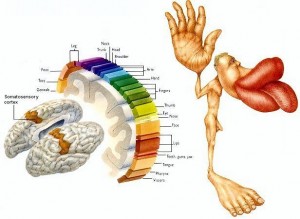30 functions of the Nose
Promotes Relaxation & Balancing the Nervous System
Nasal breathing has a naturally greater resistance than mouth breathing to how air enters and exits the body. This promotes a slower breathing rate, a lower breath with greater recruitment of the diaphragm and brings about balancing nervous system’s response to activities of daily living. The perceived effort or demand of any activity can be met with greater internal stability.
Boosts Brain Functions
Nasal breathing helps to bring greater clarity with all functions of the human brain. This includes task prioritization, orientation, interpretation of information, recall and memory, intuitive integration, perception and so much more. The brain is one of the greatest consumers of oxygen. Proper nasal breathing stimulates and optimizes oxygen delivery for all functions. Furthermore, nasal breathing during sleep has shown to help the brain circulate all fluids for rest, recovery and restoration of brain tissues, especially the glial-lymph tissue responsible for removal of metabolites and keeping a healthy environment for all brain cells and tissues.
Expand Visual-Spatial Field
The eyes are directly linked to nasal breathing. With a greater expanse in the visual field – seeing the forest through the trees – promotes a neurological circuit of more relaxed breathing. When the eyes are looking at something specific – a big redwood in the forest – then the breath changes to slightly more rapid as the concentration, often with a greater work load to focus, and stimulates survival mechanism internally.
In 2019, researchers at the Weizmann Institute in Israel suggested that nasal inhalation could be linked to part of an evolutionary survival mechanism. We see this in nature with other mammals using their nose in environments, and can sense the state of safety. The Weizmann team theorized that nasal breathing in modern life and competitive sports might trigger the brain for visual-spatial focus. They demonstrated that nasal breathing synchronized electrical activity in the brain on a wavelength that helped to maximize visual-spatial (VS) awareness.
Mediates Smell & Behavioral Response
The nose and its functions shape our behavior, memory, and emotional responses.
The sense of smell is directly linked to the gateway of our emotional and survival systems – the limbic complex which includes the amygdala and hippocampus centers. The amygdala is responsible for the emotional processing of essences, with the smelling information providing positive and negative feedback in the associative learning process. Brain imaging studies have found that activation of the amygdala correlates with pleasant and unpleasant odors, reflecting the link between odors and emotions.
The hippocampus, which is also closely linked to the sense of smell, assists with the learning process and is associated with memory, specifically experiential episodes. This is how a specific smell can stimulate the retrieval of a specific memory.
Optimizes Vocal Effort
It is important for anyone who speaks, or sings, for a living – teachers, presenters, news and sports broadcasters, leadership roles – to maintain nasal breathing during their everyday life, including exercise, rest and sleep.
The voice relies upon many functions. Sound is a vibration of the vocal cords. This physical and physiological activity is optimized with proper nasal passage health. A plugged nose makes the pressure distribution for sound much more on the vocal folds. The vocal cords rely heavily on the health of the nasal passages for the proper pressure distribution. With a stuffy nose the vocal cords can be more susceptible to pressures and forces that can cause irritation and inflammation. In addition, nasal breathing naturally humidifies, warms and filters incoming air. This prevents contraction of the tissues inside the throat due to cold, dry and polluted air. Therefore, breathing through the nose can help reduce the vocal effort required during speech.
Harmonize Vocal Sounds
The vocal folds, or chords, rely upon the nose for proper distribution of forces and pressures when they vibrate to make sound. The rate of vibration determines the frequency, which are perceived by the ear as specific sounds, tones, and rhythms. This may often be referred to as a resonance with the nasal passages. Compare your own voice with clear nasal passages vs. a stuffy nose voice. There tends to be a hollow, monotone and shallow sound to the voice when the nasal passages are not clear. In addition, the nose provides moisture that is specific to lubricating the vocal fold tissues.
Article by Shawn M Flot, MPT. He is now a Certified Oxygen Advantage® Instructor. Combined with his 25year experience in Exercise Physiology, Physical Therapist for health and performance, and a dedicated Yoga practitioner is making for a power-house to help many people succeed in re-discovering their own health, healing and well-being.


